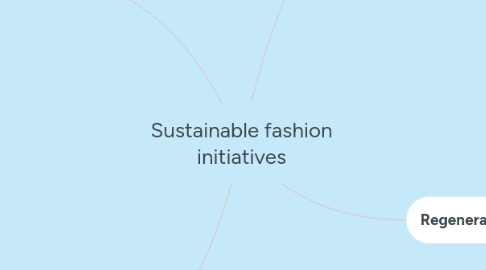Sustainable fashion initiatives
by Erin Chan

1. Circular fashion
1.1. The circular fashion is to reduce the amount of clothes being thrown away every year and to not use the idea of take, make and waste. This is to Keep materials and products in use for as long as possible, and regenerates the Environment.
1.2. Through its membership program, customers can send back their used tees in exchange for new ones as often as they want, making the model well-suited for fast fashion consumers. The company recycles these shirts to be made into other shirts.
1.3. The circular fashion is recreating a better cycle for the fashion industry, where we keep materials in use for a long period of time, regenerate natural materials and design out waste and materials.
2. Automated manufacturing
2.1. Automation opens up the possibilities for a local supply chain, which requires less transportation and could result in reduced pollution. It could also minimize concerns around labor conditions in offshore manufacturing facilities.
2.2. There have been upgrades of using more ways to make fashion more sustainable. Such as the new 3D robot that can help automate the manufacturing process.
2.3. The company works with clothing manufacturers located near its LA headquarters, enabling faster prototyping. With automated manufacturing, the process could speed up even more, especially in an ever-changing fashion scene, where the trendy designs of today may render unpopular tomorrow. It would allow retailers to react to emerging fashion trends, and manufacture a product more quickly than by traditional means.
3. Alternative Textiles
3.1. It's been estimated to produce one cotton shirt, 713 gallons (2.7 m³) of water is required and for an average human to consume that amount of water is approximately 2.5 years.
3.2. Most clothes are made from synthetic, so it is cheaper and a bargain to buy. However, synthetics materials such as acrylic, polyester, and nylon degrade contain harmful toxic chemicals in dyes and bleaches.
3.3. Despite the negatives of clothing factories, some fashion brands are turning to agricultural waste products, such as using materials like leaves and rinds are eco-friendly textile alternatives.
4. Regenerative farming
4.1. Because of its use of cotton and other raw agricultural materials, the fashion industry and its supply chains are directly linked to Soil degradation and biodiversity loss.
4.2. The regenerative agriculture are supporting to not use any chemicals, such as pesticides and synthetic fertilizers to grow crops faster, due to how it has impacted our environment, ecosystem and many human Lives across the globe.
4.3. Other brands such as Patagonia and Prana are also investing in regenerative farming. Both companies are allies of the Regenerative Organic Alliance (ROA), which is working to create a Regenerative Organic Certification to set a standard for what can legally qualify as regenerative farming.


